VC&G Anthology Interview: Nick Newhard on Monolith’s Blood (2008)
October 30th, 2012 by Benj EdwardsBack in 2007, I intended to write an article about the 10th anniversary of Nick Newhard, the designer and lead programmer of Blood, and arranged for an interview.
 For whatever reason, my interview with Newhard didn’t take place until April 2008 via email. (That’s probably why I shelved the project.) Since it’s almost Halloween — and it’s the 15th anniversary of Blood this year — I thought I’d share this little gem from my archives. It should be a treat for any Blood fans that might be out there.
For whatever reason, my interview with Newhard didn’t take place until April 2008 via email. (That’s probably why I shelved the project.) Since it’s almost Halloween — and it’s the 15th anniversary of Blood this year — I thought I’d share this little gem from my archives. It should be a treat for any Blood fans that might be out there.
I’m presenting this interview a little more sparsely laid-out than I usually do just for the sake of expediency. Some day I will write more about Blood, but until then, I hope this nugget of history will tide you over.
Get Blood
By the way, you can buy Blood on GOG.com these days for $5.99 (price at present). It runs great in DOSBox on a fast machine — make sure you crank up the in-game display resolution for greatest effect. The game is amazing in 1440×900 VESA mode on a widescreen monitor.
I heartily endorse the thorough and frequent playing of Blood, as it is one of the greatest PC games of all time — in my opinion, at least.

Personal History
 Benj Edwards: What was the first video or computer game you ever played? What platform?
Benj Edwards: What was the first video or computer game you ever played? What platform?
Nick Newhard: The first video game I played was Pong at a pizza joint in the Seattle area.
BE: What are some of your favorite computer and video games?
NN: I have a vast collection of computer games dating back to the Apple II days and video games back to the 2600. My list of favorites is huge but many of the older games are best fondly remembered.
BE: How did you get started programming?
NN: I started programming my TI-99/4A back in the early 80s, first in Extended BASIC and then using the Editor/Assembler. This was all effectively hobbyist stuff as a kid, but it really piqued my interest in programming and game development. I jumped into programming professionally working at Orchid Technology in the 80s, writing setup programs and diagnostics for some of our hardware products.
BE: How did you break into the game development industry?
NN: My career as a Software Engineer had brought me to a branch of Novell in Sunnyvale, California in the late 80s. Across the freeway from there was Strategic Simulations, Inc., makers of some of my favorite games at the time. One day I dropped by to see if there were any game programming jobs. There were, so I applied and was hired a few weeks later working for Keith Brors and Bret Berry (two of my favorite people in the game biz).

Blood History
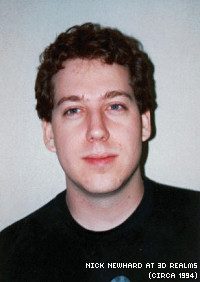 BE: What are the circumstances behind Blood‘s origin? Whose idea was it?
BE: What are the circumstances behind Blood‘s origin? Whose idea was it?
NN: The original concept [for Blood], a horror theme written by me and a friend, was far more Lovecraftian in nature and very dark. George Broussard asked us to lighten it up with more humor. We started with a major rewrite of the theme but adding humor to the game was a process that continued throughout development with significant contributions from each new team member.
BE: When did development of Blood start?
NN: Blood development started in earnest around late 1994 with a core team and an insignificant development budget. But man, we had fun.
Apogee/3DRealms entered into an agreement with our team to develop a game for the Build engine, which eventually became the Blood project. The company we formed around the team making Blood was incorporated as Q Studios. 3DRealms was to be our shareware publisher and assisted with development costs.
BE: Take us into the development process a little. How many people were working on Blood, and what was the atmosphere like in the office at the time?
NN: During the core development of Blood, prior to our team becoming part of Monolith, our team had had four key members without which Blood would never have been – Kevin Kilstrom, Peter Freese, Jay Wilson, and myself. The ‘office’ was in the family room of my house during this formative period. I can safely say the atmosphere ranged the gamut from fun to desperate at various times. Also, during the summers it was damnably hot.
After moving to Monolith, Craig Hubbard became part of the team and was a key contributor in level design, story creation, and cinematic direction. (Also, he was a bitch to kill in Quake.) Matt Saettler is the unsung hero of the project, always smoothing the wheels and keeping things on track. I can’t say enough about Monolith’s sound and music team for Blood. Our early audio builds prior to their involvement were pretty weak and they brought the game to life. Daniel Bernstein laid down some amazing tracks and even created the language for the Cabal.
Ken Silverman was responsible for the Build engine created for Apogee/3DRealms. None of the Build games would have come out without his monumental effort.
The best part of Blood‘s creation really was the team synergy, despite the ups and downs that come with game development. Breaking the back of that beast – completing the game – was an extraordinary accomplishment for a team with several members new to game development. Bathed in Blood, you might say.
BE: How did your team end up joining Monolith?
NN: Peter Freese and I had worked with many of the Monolith founders while at Edmark, creating “edutainment” software. In fact, it was working with those guys and playing Doom endlessly after hours that led to my decision to start a game company. Similarly, they founded Monolith to make games and started working with Microsoft on the DirectX Sampler CD. When I talked with Jason Hall and the other ‘Lith guys, Monolith saw the value in our team and in Blood, and we saw the value in building a future as part of Monolith.
BE: Did Monolith buy the publishing rights from Apogee when they acquired your team?
NN: When our team joined Monolith, I recollect they paid back the costs and purchased the publishing rights back from 3DRealms. Monolith and GT Interactive published the shareware version jointly and GTI published the retail product. I should mention that Rick Raymo was our producer at GT and was a blast to have around.
BE: Was it tough to make the transition between working in your family room to working in Monolith’s offices?
NN: Although I’m speaking for the team here, I can safely say we were all very happy to move into the Monolith offices. At Monolith, we were all moved into two larger spaces together, and we still had an amazing amount of extra space. No…it wasn’t tough at all. (Perhaps we missed the neighborhood park and hoops next door to my house just a little.)
BE: What role did you play during the development of Blood?
NN: I contributed pretty much everywhere I could, but mostly in the area of design, engineering, and level design to some extent. However, Blood is most definitely not the result of one person’s vision — the team created the game you played and loved. If you hated it, it was probably my fault (just don’t ask me about the Life Leech.) I did not create any art that made it into the released game.
BE: What were your biggest contributions to the game?
NN: My greatest contribution was persistence and iteration. If something wasn’t right I either made it right or pushed hard to make it right. We played the hell out of the game from the earliest builds and no one held anything back if a game element didn’t feel right. The team had a pretty heated week-long discussion over game physics and realism vs. exaggerated presentation. Ultimately, we ended up with the best of both worlds.
BE: Blood is packed with references to movies and other media. How did those originate?
NN: We were all products of our youth and many of those influences made it into Blood. In part, much of this stuff just leapt out while we were playing the game. Someone would say something and it would make it into the game. Kevin Kilstrom was probably the biggest influence in the humor and horror area. The guy kept all of us in stitches and could always be counted on to joke about something.
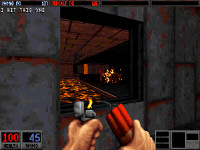 BE: Are you a big fan of the horror genre? Big Trouble in Little China?
BE: Are you a big fan of the horror genre? Big Trouble in Little China?
NN: Most of the Blood team were fans of the horror genre. Movies, books, and comics were a huge influence. Who isn’t a fan of Big Trouble in Little China? “Son of a bitch must pay!”
BE: What movies and games, specifically, influenced Blood‘s development?
NN: Lordy! What movie didn’t influence us? Army of Darkness, Big Trouble in Little China, Hellraiser, Apocalypse Now, The Crow, Fantasia, Nightmare on Elm Street, Se7en, The Keep, The Shining, The Fugitive, Halloween, Friday the 13th, Ghostbusters, Plan 9 from Outer Space, Romero’s Living Dead films, Freaks, The Goonies, Ghost, Jaws, Monty Python and the Holy Grail, and so many more.
Games: Doom, Star Wars: Dark Forces, Quake (specifically CTF), Duke Nukem 3D, Diablo
Cultural references: Edgar Allen Poe, Shakespeare, H.P. Lovecraft, Peter Straub, Sinatra, Fedor Jeftichew, mimes, and again, so many more.
BE: Did you face any significant obstacles before the completion or release of Blood?
NN: I’d say we had more than our share of significant obstacles. But to quote that Burton guy again, “We made it. Holy s—, we made it!”
From experience, every game development runs into issues. Blood started with a small development budget, insufficient development tools, a small and partially inexperienced team that had never built a game together, constantly changing requirements from the (original) publisher, an external programmer [Ken Silverman] with an unfinished engine in development…and that’s just the start. Any game development team could point to a couple of those things and say, “Yeah, I’ve been through that.” We just happened to have them all.
To add insult to injury, we had our source code stolen by an employee at a computer dealer and distributed to the internet. Having your publisher call in the middle of the night (on my birthday, no less) screaming “WTF happened?! How could you let your source code get stolen?” It wasn’t a pleasant phone call. What followed was lots of footwork in MIRC, filing a lawsuit, US Marshals in an early morning bust, depositions, lawyers and money (they are synonymous) and other not-so-fun stuff. Ultimately, Monolith settled. That would never happen now that our Feds are somewhat more enlightened about software and source code theft.
The bright side is we finished the game despite all those crazy-assed circumstances. Blood still has some amazingly faithful fans.
BE: One of the most groundbreaking things about Blood, to me, is the inventive and seamless level design. Why was Blood‘s level design above and beyond those of other FPS games of the day?
NN: On behalf of the team, thank you for saying so. You know, we frequently talked about how some other game’s levels just felt tacked together. Our goal was to lead the player through levels experiencing a story while feeling like they had actually been somewhere. We never wanted them to say “Hey! Yet another lava level…” Ultimately, Jay and Craig were responsible for putting the level progression list together and they did a great job.
Aside from the level design, I’d like to think Blood‘s complete secondary fire modes, guns akimbo, Doppler audio, level secrets, and amazing number of details are also hallmarks of the game. When someone on the team proposed a cool idea, we always tried to find a simple way to fit it in the game.
BE: Did you do any level design yourself?
NN: Early in development, I created a lot of small levels representing a theme, setting, or visual tone that I wanted to see expressed in the game. Several of those were used as starting points or feature areas for larger levels. Often Jay had to remove vert-points because I spent a lot of effort making the lighting or geometry “just right.” (Thanks, Jay!)
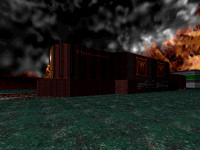 BE: What’s your favorite Blood level?
BE: What’s your favorite Blood level?
NN: For coolness factor: The Phantom Express (E1L3) was a huge favorite just because…damn…we made a moving train level! For setting: The Overlooked Hotel (E2M4). For Bloodbath: Cradle to Grave (E1M1) was great, as were Click! (BB5) and Twin Fortress (BB6).
BE: After Quake was released, did you ever worry that Blood would become technologically obsolete before it was completed?
NN: It wasn’t the technology that worried the team, but the extensibility of the engine itself. While Quake was being developed as a game engine, the Build engine was really more of a 2.5D rendering engine with some bells and whistles. The Blood team had developed a pretty good system for tagging points and lines for the game engine, we had no scripting language at all so extensibility was limited — in other words, no modding. To make up for that weakness, we focused on fast and fun game play and fantastic level design.
Don’t get me wrong; Quake was a fantastic game, and if we had it to do all over again, I’d love to have built Blood with a more flexible technology than we had at the time.

Blood: The Aftermath
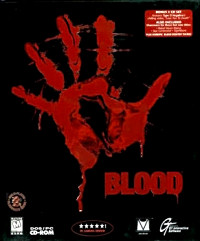 BE: Do you know how many copies of Blood sold?
BE: Do you know how many copies of Blood sold?
NN: Neither Monolith or GTI shared sales figures with developers.
BE: I remember reading in EGM some years ago that a PlayStation version of Blood was planned. Do you know anything about what happened to that project or how far it went in the development process?
NN: I wasn’t aware of that development effort. It may be something that GTI cooked up.
BE: When was the last time you played Blood?
NN: I played Blood solo for a bit last year but without audio. The last time I played with audio was probably five years ago. Maybe if I dig through some boxes I can find a compatible Sound Blaster card with jumpers. If anyone has Blood working with a virtual machine, I’d love to hear about their setup. [Author’s note: I’ve since told Nick about VDMsound and other options to get Blood‘s sound working under Windows XP.]
BE: What influence, if any, has Blood had in the gaming world?
NN: I’m not sure if Blood influenced the gaming world or the other way around. We really made a gamer’s game. The AI in Blood could be really difficult to beat. To this day, our Bloodbath mode was the most frenetic and fun multiplayer modes I’ve ever experienced. If anything, frenetic game play, pop humor, and attention to detail – the hallmarks of Blood – may have influenced later FPS efforts.
BE: Fans on the Internet have been clamoring for years for the Blood source code. What’s the story? Is the source lost forever, or merely locked in a vault somewhere?
NN: I doubt the source code is lost. Undoubtedly, someone at or from Monolith has all the assets. Nobody is talking though. Personally, I don’t have the source or assets but I may have some great videotapes of early in-game footage after we got networking in the game.
BE: Do you know who owns the rights to Blood now?
NN: It’s likely that Infogrames/Atari owns the rights, following the chain of buyouts that lead back to GT Interactive.
BE: 3D Realms released the Duke Nukem 3D source in 2003. Would you be willing to help petition Atari to legally release the Blood source code? Do you have any idea who to contact to get that done?
NN: I’d be happy to participate. I would start with the legal beagles at Monolith or maybe Samantha Ryan at Warner Brothers. They would have a better chance of giving you the right person.
BE: Is there any chance we’ll ever see a Blood 3? Were there ever plans to make another sequel?
NN: As much as I would love to play (or develop) another chapter of Blood, it’s unlikely that there will be a Blood 3. Not to be too philosophical, but whatever fates crossed or stars aligned that allowed our little team to craft Blood have long since moved on. Each of us has gone our separate ways to make good and even great games.

His Career Today (in 2008)
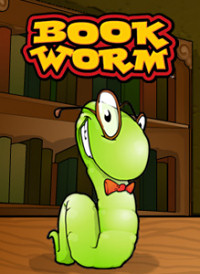 BE: Do you keep up with modern first-person shooters? Do you enjoy any particular ones?
BE: Do you keep up with modern first-person shooters? Do you enjoy any particular ones?
NN: The last FPS I tackled was S.T.A.L.K.E.R. until it crashed (repeatedly, and I so wanted to love that game.) I completed Half-Life 2 and subsequent episodes. While technically not a shooter, I’ve also played through Portal several times. I have a massive stack of games to play, across platforms and genres.
BE: You seem to be in the casual games business now — first at PopCap and now at Big Fish Games. What made you transition from action games at Monolith to tamer gaming fare?
NN: For the most part, it’s the long development cycles and notably painful crunch times that I miss so much. (sarcasm) Seriously, I’m in the business of making fun games and enjoy developing the gamut of games.
BE: Of all the games you’ve worked on, what game are you most proud of?
NN: Cheesy answer. I’m proud of all the games I’ve worked on for different reasons. Blood was the hardest game to develop, yet we made it against nearly insurmountable odds. I handpicked the core team and they have all gone on to do great things. For that, I’m most proud.
BE: Any final thoughts you’d like to include that we didn’t cover?
NN: Yeah. Blood would have been impossible without the patience, endurance, indulgence, and encouragement of my wife Helen. Thanks, honey.
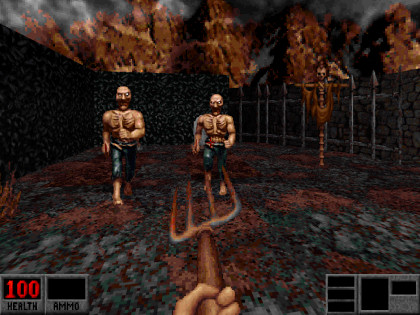


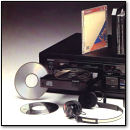
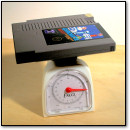

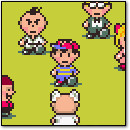
October 31st, 2012 at 1:19 pm
An interesting read. I’m curious though, did they ever find out any details as to how the source code was stolen?
November 2nd, 2012 at 11:48 pm
I have it from GOG. You don’t need a fast machine to play it. I have a lousy very old Nivida GeForce 6150SE Nforce 430, (who ever heard of?) card. It plays just lovely. I have a hoop of GOG games and only The Witcher and Legend of Grimrock play slow on my old beater.
November 4th, 2012 at 9:41 pm
Remembering this game. Solid interview.
November 8th, 2012 at 11:42 pm
Sorry I misunderstood you obviously. You mean it can run on a fast machine with DosBox. Color me NooB -_-
January 24th, 2013 at 5:55 pm
it was a great intervew, and after all this years i see an unsecure future to the sourse code, atari is going down and it´s maybe taking blood to hell with him, i hoppe in some year someone can bring caleb back of his grave and show some guts and blood.
October 6th, 2013 at 2:43 pm
Such a great game. Thank you for making it; as he said, a true gamer’s game. I miss when developers had the balls to make them.
Sure do wish the source code got released.
November 28th, 2015 at 8:13 pm
Great interview, I love both Blood games with their expansions, I am really glad that awesome people like this were able to make videogames, and i just want to say THANK YOU Nick Newhaard, thanks a lot for those awesome games, you guys have a lot of talent. I also loved other Monolith games like Fear series.
Greetings
October 20th, 2018 at 3:33 pm
Wow what a great inverview I’m impressed. I’ve played Blood when I was young. I remember the whole 1st episode, zombies, dynamites, guns and that creazy voice “caaaleeb”. If I could recommend something for Blood lovers like me check game Project Warlock. Its combination of Blood, Duke and Hexen. Marvelous
November 2nd, 2025 at 12:27 am
28 years later, we’re getting Blood on the consoles. Never thought this would happen. Thank you Nick Newhard and team. I memorized your names while watching the credits after completing Plasma Pak so many times. Tried to read about the game and you guys back then but there were not many articles available. This was a godd interview. Thank you Nightdive Studios for resurrecting another part of me which I thought I’d lost decades ago. “I live… again!”